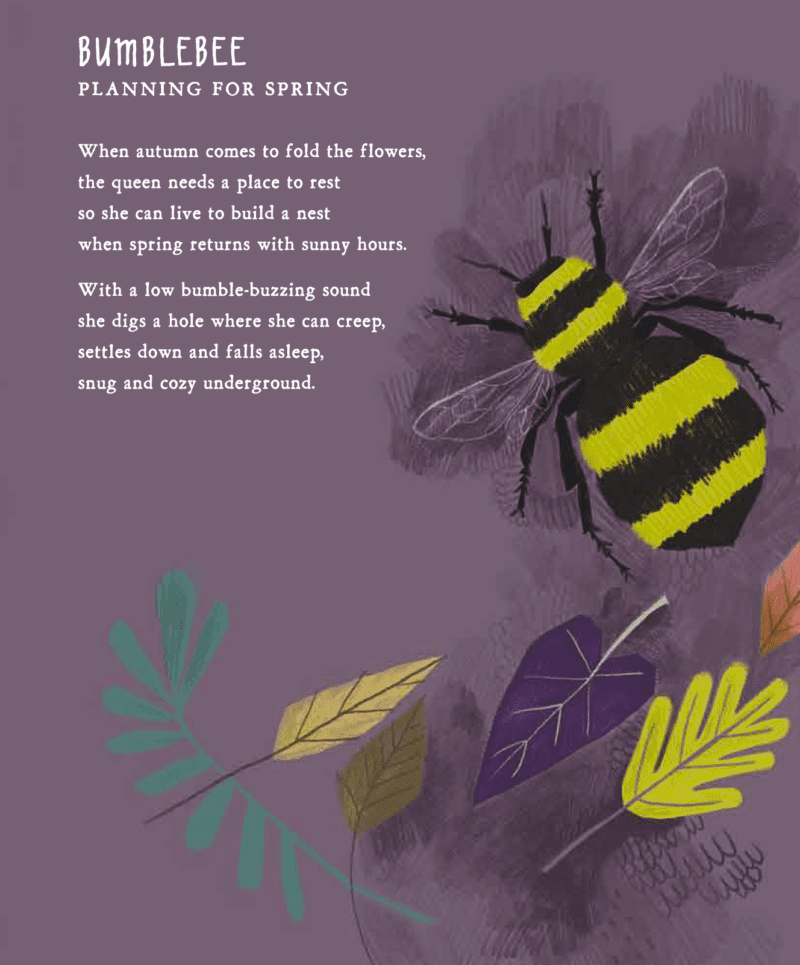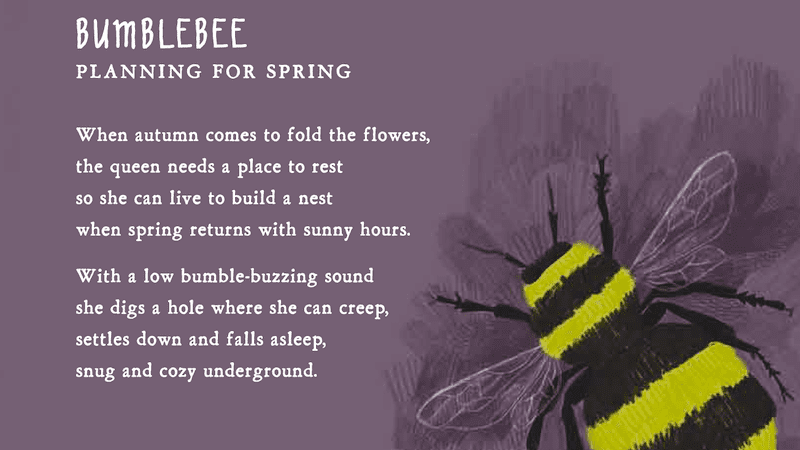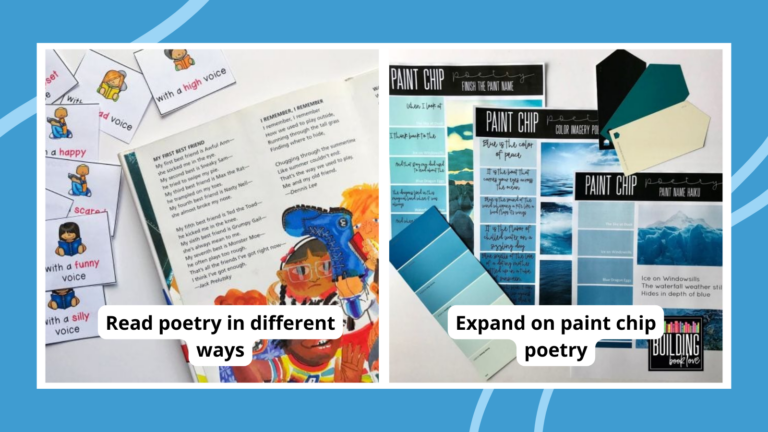I write about nature because I like the subject and have studied it over a lifetime, but more than that, I believe it is critical that young people understand our stewardship of the Earth. All of us must protect the environment and be good neighbors to the countless creatures that share it with us.
Nature is to writing what reading is to learning. It makes us curious. It compels us to take a closer look and ask questions. Here, I share activities for teachers that invite learners to peer at the world around them, wonder, perhaps research, and then use their science observations to write poetry.
Celebrating the here and now
These days a growing number of poets are writing with classroom curricula in mind. In many books, the poems include salient information about the subject—a doodlebug, the weather, the desert—and are supplemented with further information on each topic in notes at the back of the book. Poetry, perhaps more than any other genre, is made to order to deliver entertaining, informative, easy-to-remember lessons in a minimum of time. Here’s an example from my most recent book of poetry, The Dirt Book, (Holiday House, © 2021).
First, the poem.

And in the back of the book, I provided succinct information about queen bumblebees:
Late in the year, when plant blossoms begin to fade, a new bumblebee queen flies from the nest and finds a mate. After that she fattens up on enough pollen and nectar to last for months. When she’s ready, she searches for a safe place to pass the winter. She may dig under a shed or make a hole in the ground or move into an empty mouse tunnel. The other bumblebees in her colony die during the winter but she lives on. In the spring she comes out, builds a new nest, lays eggs, and starts a new colony.
Pick a genre
The other day I read aloud poems from The Dirt Book to a group of elementary students. Afterward, we trooped outside and spent fifteen minutes poking around in the grass, taking closer looks at bare spots in the dirt, and turning over rocks. Notes and sketches were taken on notepads. Back inside, students shared what they had seen. Everyone was invited to pick a subject from among those they and their classmates had seen, something they’d like to learn about, think about, and write about. I encouraged them to make up a poem, or write an informational piece, or make up a story starring their subject—the choice was theirs. What they discovered is that once we start thinking about a subject and learning more about it, ideas begin to flow. They were learning that writing doesn’t begin until we’re ready to begin.
Also, as writers, they may have the freedom to choose the genre that best suits the material— but a responsibility to keep the facts about the flora or fauna accurate.
They were learning that writing doesn’t begin until we’re ready to begin.
Encourage pre-research
Writers must get ready to write before they begin writing. The process can be called pre-research, the act of getting ready to get ready. It usually begins by asking questions about what we want to know about our subject. All writers do this—historians, scientists, poets, and so on. In this case, I began by asking myself what I wanted to know: What is dirt anyway? Where does it come from? What’s in it? What’s down there? Are there things down there creeping, crawling, sleeping, and growing in the dark where not the tiniest pinhole of light can ever reach?
In my pre-research for The Dirt Book, I remembered reading that Albert Einstein gained insight about time and travel by imagining a laboratory inside an elevator descending through space. Inspired by this notion, I envisioned my own make-believe elevator to take my readers into the subterranean world below the ground. From there, I created a list of creatures that live below ground for at least some part of their lives.
Write a fact-based poem
If you live where late fall days grow chill and flowers stop blossoming and wither (or your kids just have vivid imaginations!), here’s an activity to inspire poems about the bumblebee. Reread the poem and back note. Then invite students to become a newly hatched queen bumblebee. Think like she thinks as she flies low and slowly around the schoolyard, pausing here and there to examine possible sites where she can dig in to spend the winter without dying. They need to use their best thinking to make a safe choice.
Once a site is selected, write a poem about what it is, where it is, and why it’s a good choice to protect the young queen bumblebee until spring comes again and she can raise a new colony of bees. Students can also write a companion nonfiction paragraph if they wish.
How do you blend science observations and poetry? Share in the comments below. Plus, read our favorite summer poems!


